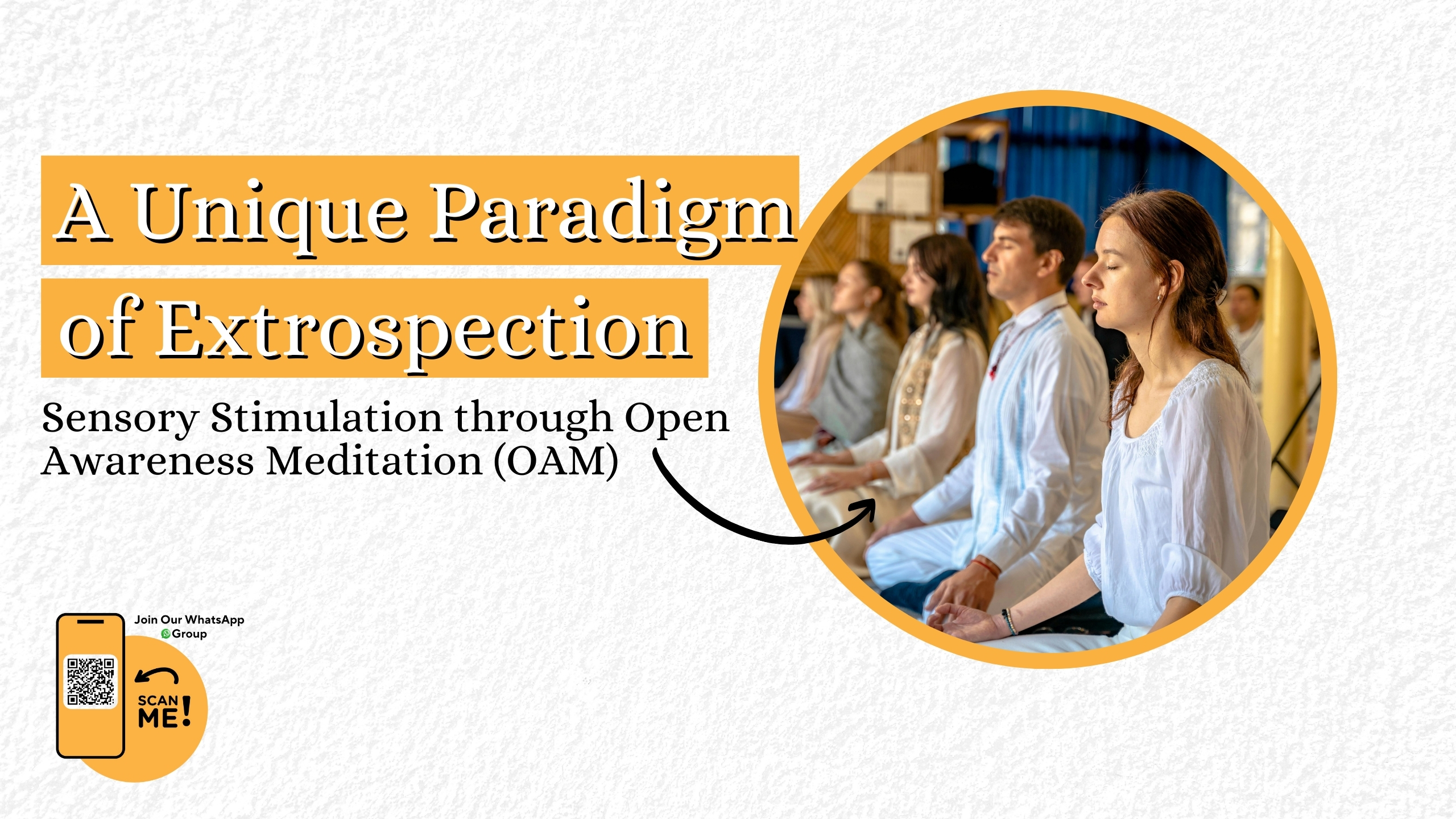👀The Science:
Open Awareness Meditation (OAM), though not popularly practised, is an internal-external type of meditation which not only involves looking deep within but also expanding awareness away from the body with the help of external stimuli. There is no single point of focus as in the traditional sense but observing multiple stimuli without judgment. Here’s how it works:
- Sensory stimulation: a multi-sensory stimulation effectis elicited where the brain continuously receives inputs but processes them in a calm, non-reactive way.
- Sensory cortex: Your sensory cortex is kept happilybusy while also decreasing default mode network (DMN) activity.
- Thalamic gate: Sensory input and output is kept more balanced with reduced sensory overload and maintained perceptual clarity.
- Prefrontal cortex: The seat of your behaviour and personality- here you can attain “observer without reaction” This is due to Dorsolateral prefrontal cortex (dlPFC)andanterior cingulate cortex (ACC)which regulate attention and also inhibit automatic reactions.
- Neuroplasticity: Strengthens your insula and ACC, which thereby gives better interoception and emotional state.
- Physiological benefits: Improved Heart Rate Variability, physiological arousal, reduced cortisol, and dampened startle reflex to external stimuli.
🧘🏻Practical Methods:
- Body Sensations: Noticing warmth, tingling, or tension in the body as part of the sensory field.
- Environmental Scanning (with Eyes Open or Soft Focus)
Softly observe your surroundings- rooms, nature, or ambient light- without analysing or labelling or judging characteristics. - Sensory Awareness in Nature
Sit outdoors and gently tune into sounds (ex-birds, wind), subtle scents, and textures. Let these surround your consciousness- anchoring on external stimuli. - Balanced Awareness
Maintain a gentle presence in the room while exhaling (e.g., objects around you) and awareness of your internal sensations while inhaling (e.g., cool air filling your lungs), without overemphasizing. - Guided Visualization of Expansion
Imagine your awareness like ripples expanding beyond your body, touching space around you. Recognize how self-boundaries soften, and with each expansion the feeling of lightness ensues.
📃Guidelines to follow initially to tune yourself:
Step | Action |
1. Setting | Find a calm, comfortable spot. This “outward” environment sets the stage. |
2. Grounding | Start by noticing your breath or touchpoints (chair, ground). Acknowledge both internal and external sensations. |
3. Expand | Gradually shift your awareness outward to include ambient sights, sounds, or the feeling of the air. Keep your attention open, soft. |
4. Balance | Drift between inner and outer awareness—observe without judgment or force. If the mind pulls inward, gently return to the environment; if over-stimulated by sights, drift inward. |
5. Reflect | After each session, note how awareness shifted. Checklist: o Did you feel calmer? o Did you feel more connected? o Did your awareness feel more sensitive? o Has your focus intensified? That inter-sensory balance itself may be the benefit. |
🫱🏻🫲🏻Words of wisdom:
Don’t fight your distractions, instead embrace them in a way they make most benefit to you. Be it a fuzzy fan, a buzzy bee, a roaring shore or a tumultuous train, just observe and own it. You will see the shift!!
🖇References and Links:
- Brewer JA, Worhunsky PD, Gray JR, Tang YY, Weber J, Kober H. Meditation experience is associated with differences in default mode network activity and connectivity. Proceedings of the National Academy of Sciences. 2011 Dec 13;108(50):20254-9.
https://pmc.ncbi.nlm.nih.gov/articles/PMC3250176/#s1
- Lutz A, Slagter HA, Dunne JD, Davidson RJ. Attention regulation and monitoring in meditation. Trends in cognitive sciences. 2008 Apr 1;12(4):163-9.
doi: 10.1016/j.tics.2008.01.005
- Jerath R, Barnes VA, Dillard-Wright D, Jerath S, Hamilton B. Dynamic change of awareness during meditation techniques: neural and physiological correlates. Frontiers in human neuroscience. 2012 Sep 17;6:131.
doi: 10.3389/fnhum.2012.00131
- Lazar SW, Kerr CE, Wasserman RH, Gray JR, Greve DN, Treadway MT, McGarvey M, Quinn BT, Dusek JA, Benson H, Rauch SL. Meditation experience is associated with increased cortical thickness. neuroreport. 2005 Nov 28;16(17):1893-7.
https://pmc.ncbi.nlm.nih.gov/articles/PMC1361002/
- Ooishi Y, Fujino M, Inoue V, Nomura M, Kitagawa N. Differential effects of focused attention and open monitoring meditation on autonomic cardiac modulation and cortisol secretion. Frontiers in Physiology. 2021 Jul 15;12:675899.

Written by Dr Shobhitha Tantry B

